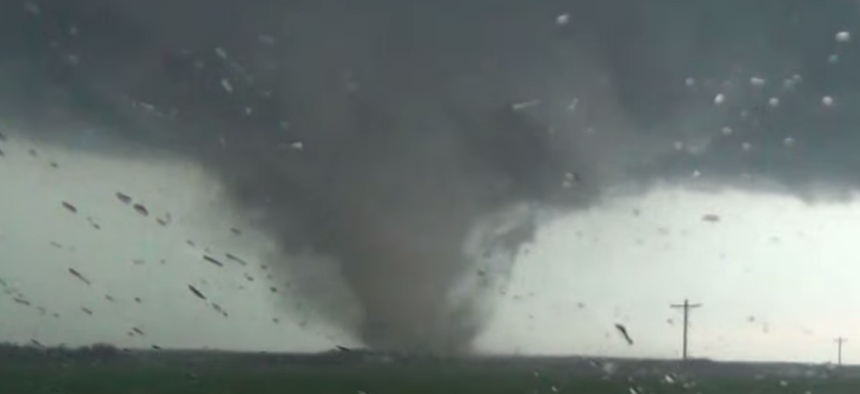Tornado Swarms Are Now Upon Us
Twisters are arriving more frequently in large "clusters," say NOAA scientists.
Despite greenhouse gases storing more heat energy for storms , there hasn't been a mad increase in tornadoes in the United States. However, the behavior of tornadoes is changing, moving from being spread throughout the year to coming in "clusters" of frenzied and destructive tornadic activity.
That's the conclusion of Harold Brooks and other NOAA researchers who have done a fresh scan of the nation's historical weather data. Since the 1950s, they write in a study in Science , there hasn't been any significant trend in the number of tornadoes each year. But beginning in the '70s, more and more twisters have come down in violent swarms—think of the horrible outbreak of April 2011 , when in just two-days' time 175 confirmed tornadoes caused hundreds of deaths and billions in damages. (There were an astonishing 751 tornadoes that month, way above the historical annual mean of 495.)

Tornado tracks from the April 2011 outbreak, the largest in recorded history. ( NOAA/Google Earth )
Brooks' team logged an increase of as much as six times in days with multiple tornadoes. In the '60s and '70s, there was 0.5 to one day each year with more than 30 tornadoes ranking above EF-1 ; in the past decade, that number has shot up to three days. The last year to feature less than two days with under 30 twisters was way back in 2002. Here's more from the study:
In effect, there is a lower probability of a day having a tornado, but if a day does have a tornado, there is a much higher chance of having many tornadoes. As a result, tornadoes are "concentrated" into a smaller number of days in more recent years. Approximately 20 percent of the annual tornadoes in the most recent decade have occurred on the three "biggest" days of each year, in contrast to 10 percent in the earlier period. This concentration leads to the potential for short periods of time, such as months, to have extreme (both large and small) numbers of tornadoes.
The nature of the tornado season also appears to be shifting. The term "season" is a bit deceptive, as twisters can (and have) occurred on every day of the year, but historically things start heating up around March and April. As with the grouping of tornadoes, the season's timing is turning extreme: It now tends to start really early or really late. Four of the latest-known "beginnings" of the season have happened since 1999, and five of the 10 earliest starts have fallen within the same time frame.

The researchers don't attribute these transformations directly to climate change. That's in line with what many scientists think: Though global warming is likely causing extreme rainstorms with longer dry periods in between, its relationship with tornadogenesis still needs further examination. But if the pattern continues to grow more extreme, they warn, it "could lead to an even greater concentration of damaging tornadoes on fewer days."



